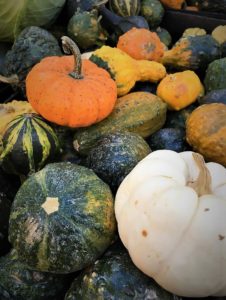In the English language, years can be grouped into decades, scores, centuries, etc. In Chinese culture, years are marked by sixty-year cycles. Traditionally, each year is identified by two characters. The first will be one of the ten characters from 天干 (tiāngān, Heavenly Stem): 甲乙丙丁戊己庚辛壬癸; the second, one of the twelve characters from 地支 (dìzhī, Earthly Branch): 子丑寅卯辰巳午未申酉戌亥. The cycle beings with 甲子 and continues with 乙丑, 丙寅, so on and so forth. Since sixty is the least common multiple of ten and twelve, every sixty years, after reaching the combination of 癸亥, the cycle will reset to 甲子.
Although this system is no longer used in modern calendar, the term 甲子 and the sexagenary cycle still weigh heavily on the Chinese psyche. The phrase 花甲之年 (huā jiǎ zhī nián), meaning “sixty years of age,” commonly refers to sexagenarians. The character 花 (flower/flowery) implies the intricacy of the system. However, when I was little, I associated it with the salt-and-pepper hair (花白) of OLD people.
The twelve-year cycle of Earthly Branch runs concurrently with the twelve Chinese Zodiac signs: rat, ox, tiger, rabbit, dragon, snake, horse, goat, monkey, rooster, dog, and pig. So, it is not difficult to be aware of the turn-around of the cycle. I was born the year of pig. On New Year’s Eve, I started getting greetings with symbols of pig from my Asian friends. Suddenly, I was reminded that I would be turning sixty this year.
Confucius said: “I aspired to learning at fifteen; established myself at thirty; was no longer doubtful at forty; understood my destiny at fifty; was able to discern the truth in what I heard at sixty; and could follow my wishes without crossing the boundary at seventy.”[1] In my case, I did aspire to learn early in my life. I was full of hope and ambition when turning thirty. At forty, I was fighting hard to find my place in this world, professionally and personally. When I turned fifty, the world was struggling to get out of an economic downturn. Having earned the freedom to follow my dream, I found myself in a big city, loving what I do but unsure of my directions.
Another decade has gone by. I finally realize that life is a continuous journey that does not need any milestones. I continue to find myself ignorant of many things: Every day is a new learning experience. I continue to find wonders in my surrounding: The world is a playground full of surprises. I continue to face challenges: There is always a “next step” to take or a problem to be solved.
Nevertheless, I like to mark this year by remembering many people that made my life possible and influenced me.
[1]子曰:“吾十有五而志於學,三十而立,四十而不惑,五十而知天命,六十而耳順,七十而從心所欲不踰矩”。——《論語•為政》The original text is taken from Lúnyǔ (The Analects of Confucius), Wei Zheng Chapter. The translation is my own.

